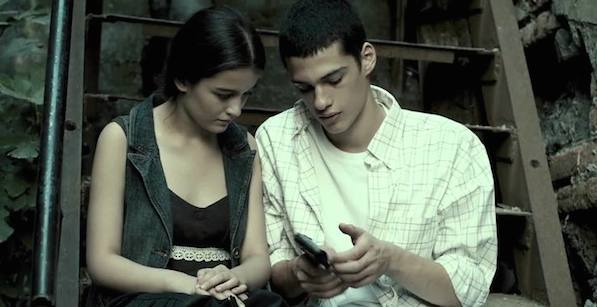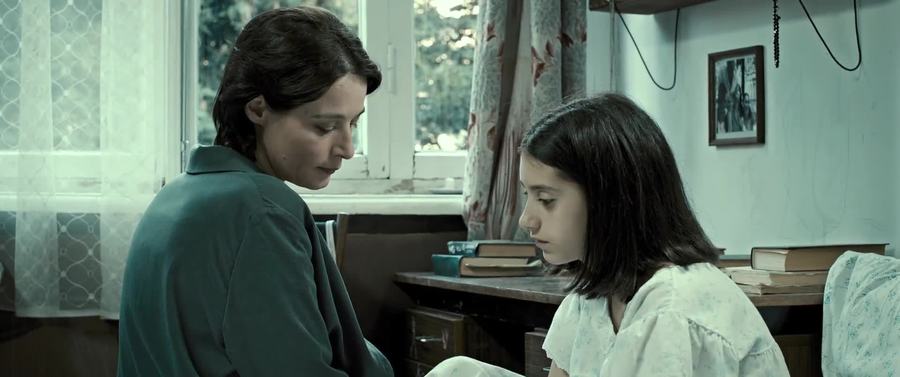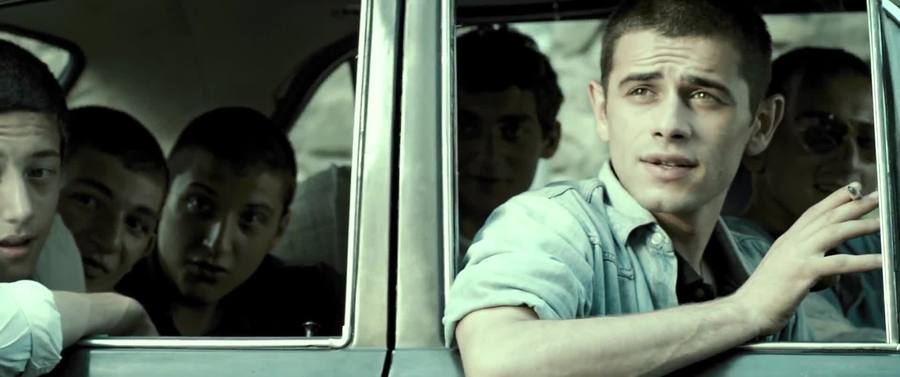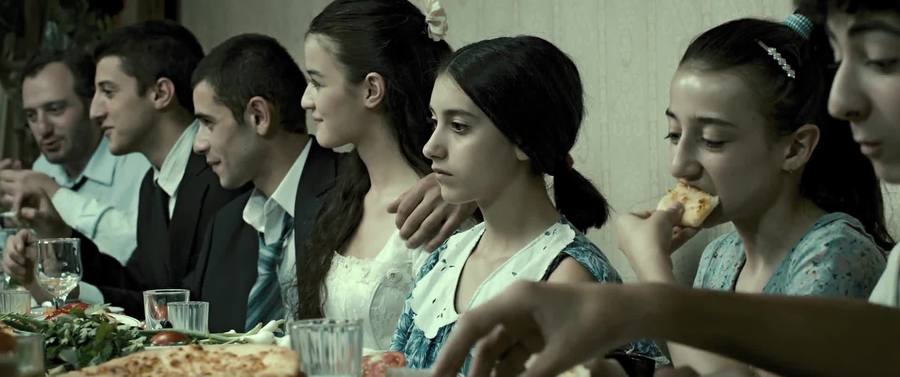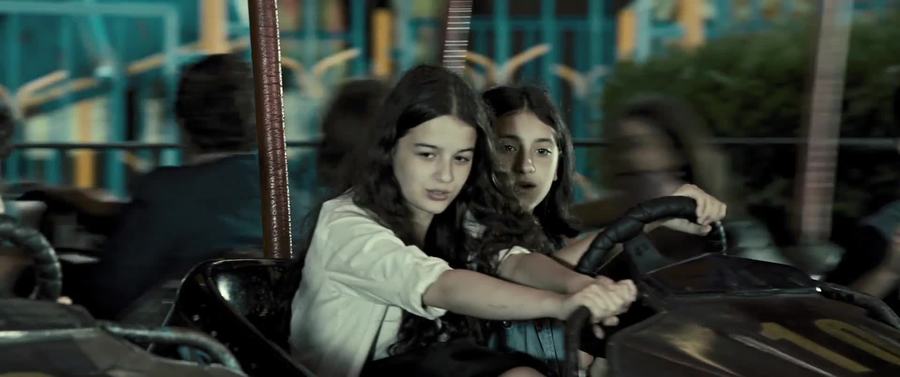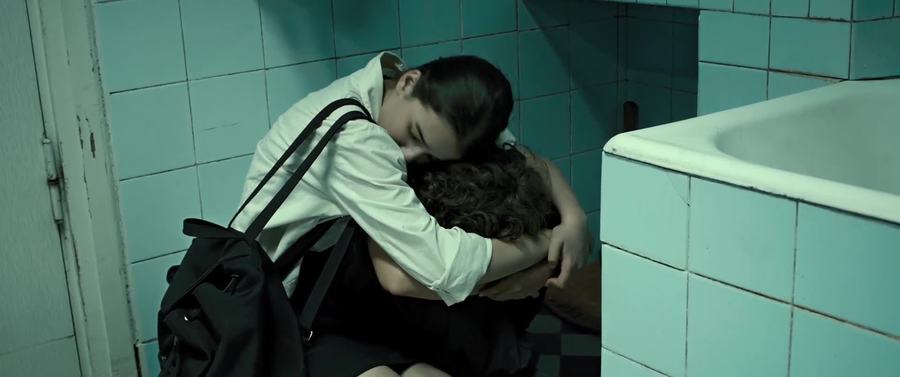Tagged a “crime” and “murder” film, In Bloom, has a gun handed over as a gift within its first half hour. But fear not the spoiler: directors Nana Ekvtimishvili and Simon Groß are well aware of Chekhovian principle, and use our expectations to subvert our expectations with In Bloom. The gun’s presence hangs over the narrative like a ticking time bomb. Every time it changes ownership, the tension ratchets further. Multiple situations arise where it would be perfectly justified, even a relief, to pull the trigger.
The question isn’t whether it will be used—Chekhov set the rules for that, didn’t he?—but when it will be used, by whom, and to what effect.
Such acknowledgment of dramatic and genre conventions only to transcend them is commonplace in this Georgian drama (original title: Grzeli nateli dgeebi), the country’s official submission to the Oscars last year. Ekvtimishvili, who wrote the script, reached back to her own experiences of growing up in the nineties; the authorial intimacy within the material is palpable.
The action is set in the capital Tbilisi. The country, newly independent from the USSR, is about to plunge into a civil war that would eventually last three years. Hints of the turbulence to come are everywhere. In the opening scene we hear a radio broadcaster announce that Georgians are warriors “by nature” and that this state of violence is perpetual.
This scene is also our introduction to Eka, the protagonist. Eka and her best friend, Natia, have much bigger fish to fry than the conflict in Abkhazia. Their families start quarrelling at a moment’s notice (if even that), their teacher is brutally authoritarian, the bread queues are unendingly hostile, and—most importantly, perhaps—boys have begun to notice them, romantically and otherwise.
Much of In Bloom is universally relatable because, after all, teenage pathea are universally relatable. Yet, geopolitical specificities are there to remind you of what’s alien about the setting. When Wil Wheaton’s Gordie walked across town in Stand By Me (1986), the background was an idyllic, idealistic American neighborhood. When Eka walks home from the bus stop, the background is a dirty, dangerous and decaying city.
The strife surrounding the characters pervades every aspect of their lives; even a school classroom is not impervious to an incendiary political rant by the teacher. This rant is part of a bravura three-minute continuous sequence with a rousing mutiny as its conclusion. Various similarly well-executed setpieces prop up the seemingly loose narrative. A dinner-table conversation that turns into an ugly multiparty argument is terrifying because of how tense it is. Every family member is one step away from pulling their own trigger.
A different kind of high-strung tension is witnessed later, in a queue for bread. Local militia cut the line to scoop up provisions, eliciting disgruntled murmurs from the hoi polloi. While Eka and Natia are still waiting, the latter is kidnapped by a rejected suitor. Eka runs after the hooligans but in vain. She returns to the cowardly crowd and berates them, only to be slapped by another grumpy old man. All of this is depicted with a roving camera, as director of photography Oleg Mutu (who frequently collaborates with Christian Mungiu and Sergei Loznitsa) moves everywhere without cutting, without letting us take a breath. The effect is astonishing, making quotidian acts resemble war movie moments.
In Bloom is charmingly blunt in numerous cases, almost as if operating in shorthand. As Natia and a romantic prospect walk along the streets, a substantial portion of the frame is occupied by a blossoming tree in the background: the first time in the movie, I think, we see the color pink. In a later scene, the now-married Natia stares at this boy wistfully while a street performer croons. Just as the musician sings, “If you have a dream, [life] will crush it,” Natia’s kidnapper-husband arrives to pick her up.
And yet, where it matters, Ekvtimishvili’s script goes in novel directions. Watch out for the way a subplot featuring Eka and a local bully—is any coming-of-age story complete without one?—is resolved. It may be the film’s most affecting moment. Or observe how the turmoil of the teenagers’ lives is cemented by an outing with bumper cars: that evergreen staple of raucous afternoons is actually the tamest part of these lives.
That In Bloom has the emotional appeal it does is hugely due to the soulful performances by its two leads, both of whom are not even professional actors. Lika Babluani portrays Eka as someone subdued by the situation, not into subservience but into determined acceptance. She may be quiet, but that is not to be mistaken for meekness. Babluani embodies this grit through her body language, standing up believably to people who could cause her serious harm. Meanwhile, Mariam Bokeria’s work as Natia demands more screen presence, more charisma and more decibels. Bokeria provides all of them.
The problem with In Bloom is that describing it—from the plot to the title—can evoke a feeling of familiarity. While there’s no shortage of coming-of-age neorealist dramas set in fraught environments, this one is a well-cut gem, a beautiful and keenly felt film that uses deeply personal experiences to convey its universal truths.

